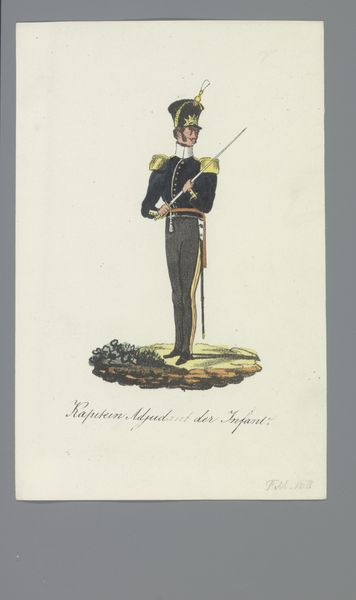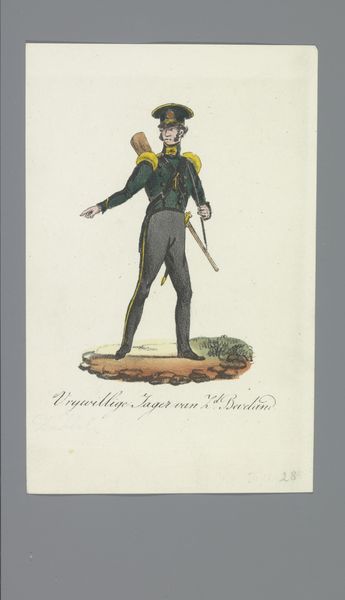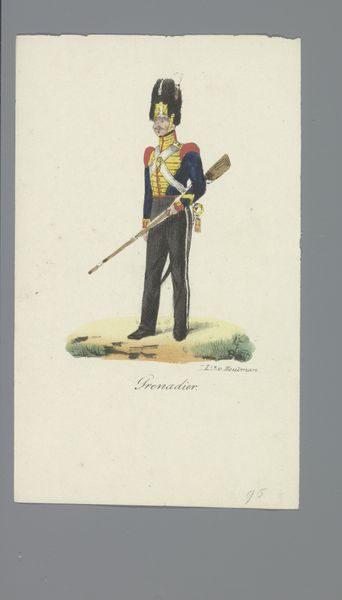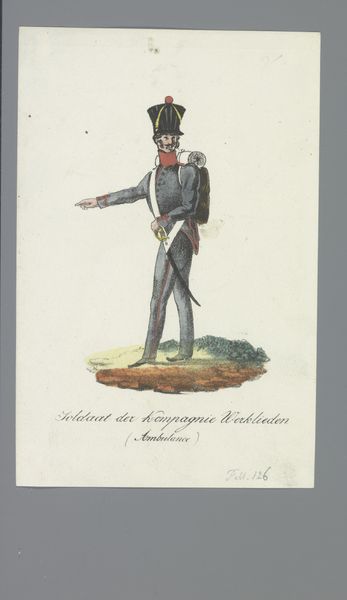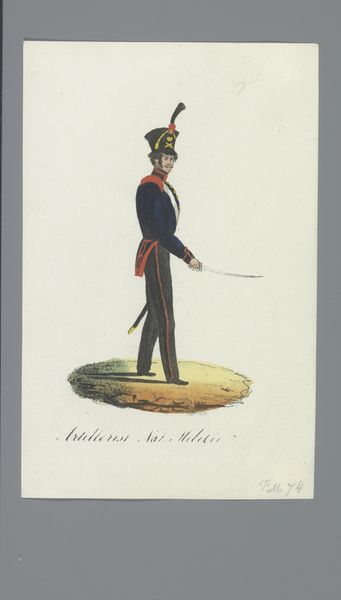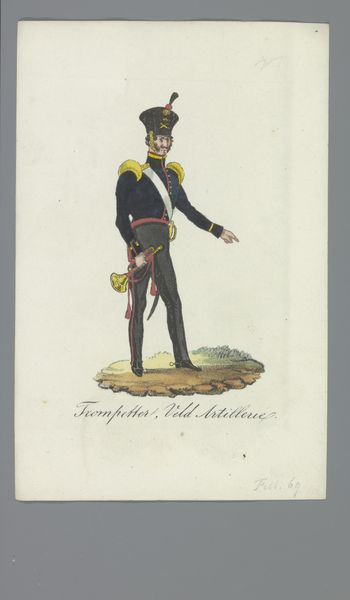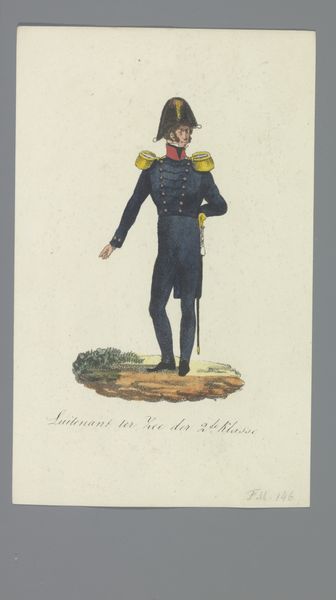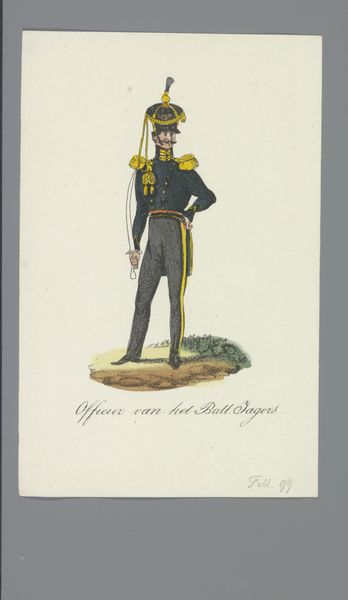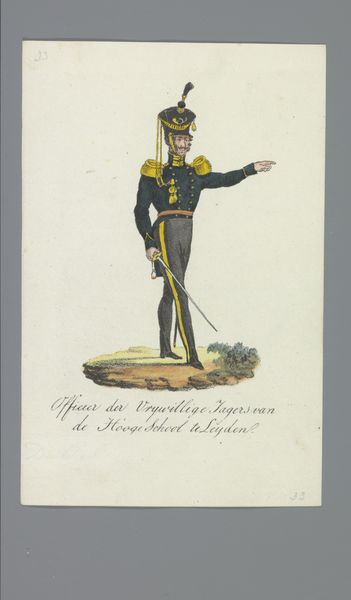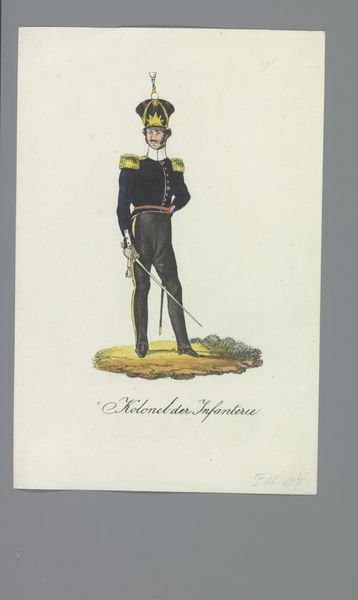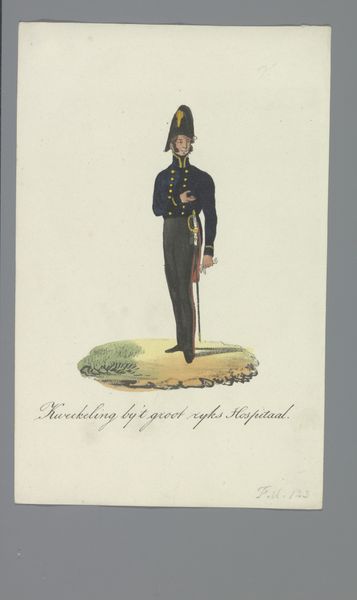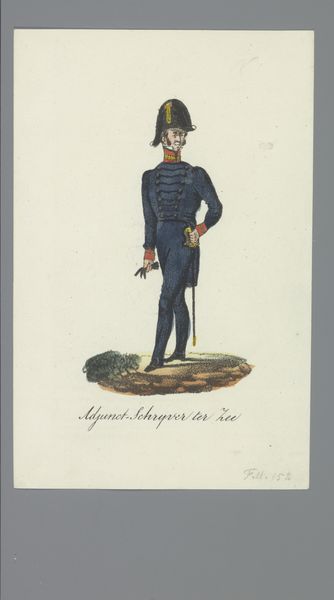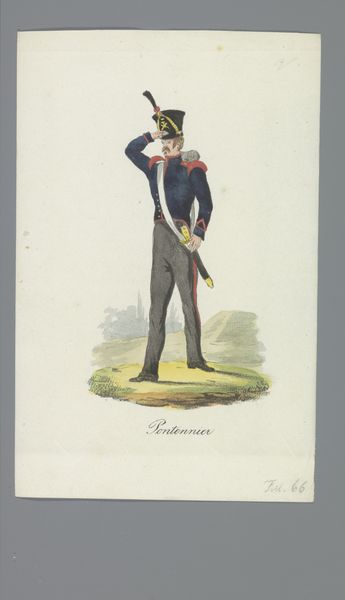
painting, watercolor
#
portrait
#
painting
#
watercolor
#
romanticism
#
costume
#
watercolour illustration
#
genre-painting
#
history-painting
#
academic-art
Dimensions: height 170 mm, width 110 mm
Copyright: Rijks Museum: Open Domain
Editor: This is "Korporaal van het Korps Mariniers" by Albertus Verhoesen, painted sometime between 1835 and 1850, using watercolor. He looks so proper and stiff. What can you tell me about this portrait? Curator: This watercolor offers us a glimpse into the construction of national identity through military imagery during a period of nation-building. How does his uniform strike you, considering the Romantic era’s emphasis on individuality versus duty to the state? Editor: Well, he seems to be less about individual expression and more about fitting into a prescribed role, I guess. What are the politics behind this sort of representation? Curator: Exactly. These portraits of military figures served a very specific political purpose. They were tools used to cultivate patriotism, project power, and reinforce social hierarchies. Who do you think would have been the intended audience for a piece like this, and what message would it convey? Editor: I suppose it’s meant to inspire a sense of order, strength, and loyalty in the general population. Perhaps it was even used as a recruitment tool? But what does this tell us about race and gender? Are we seeing a reflection of who holds power at the time? Curator: Precisely. Notice who is *not* represented. The whiteness and maleness are not accidental; it is a deliberate visualization of power structures. And the discipline embedded in the stance and attire reinforces an ideal of masculinity tied to military service and national allegiance. Considering that, how does the seemingly simple portrait suddenly speak to broader societal norms and power dynamics? Editor: I see. It's not just a painting of a soldier, but a statement about who was considered important and powerful at the time, and the values they represented. It is all in the context. Thanks! Curator: And context is crucial. Thinking about it this way lets us consider the artwork as a primary document for understanding the construction of identity and power.
Comments
No comments
Be the first to comment and join the conversation on the ultimate creative platform.
